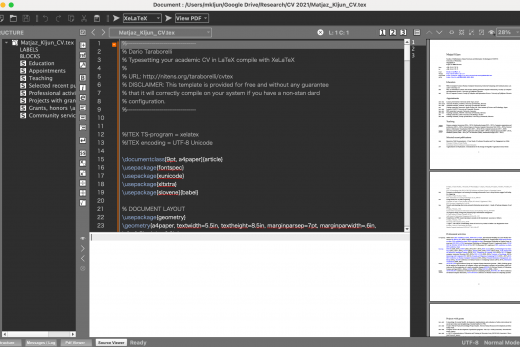Edit 07/06/10
There are several tools that keep track of document versions or revisions. There is even something called versioning file system which allows a file to be in several versions at once (think of the Time Machine for example or Dropbox which does not replace a file, instead it stores another version of it). New MS Office also allows to return to previous states of a document. But … a lot of us just copy a file and start working on a new one leaving the old version alone (I do that if I have to cut out some text out which I think I might use in the future – so the text still remains in the old version). Or copy a file in another folder because it is needed there as well (multi-categorization is not supported by present file systems). Or copy information between several computers we might end up working on a wrong version (why not using Dropbox, right?).
Instead of using sophisticated tools to do this, why aren’t computers (as they are) helping us in another way. Present file systems have Extended File Attributes or even forks (Alternate Data Streams in NTFS for example) but there is no simple way for users to enter additional attributes and not even see them in a file manager. (BeOS had this functionality to add/edit/copy file metadata).
Metadata could be used to store links to versions of files and much more.
For example: I copy a file from one folder to another. I select one of them and a file manager could:
- inform me that there is another version of a file in another folder (and show me the difference and all accessed times)
- inform me that I copied this file (or any other copy on the same disk) to another external location (external drive or on the web because a file manager is used to select files we post on web)
- inform me that other files have parts of the text as selected file does (if I copied a part of a text from one file to another as it often occurs while writing reports, papers …)
MyLifeBits (Gemmell et. al., MyLifeBits: Fulfilling the Memex vision, 2002) preserved links of a part from one media was copied to another; Karger (Data unification in PIM, 2006) also argues that copying and pasting parts of information should be noticed by computers to preserve context integrity of information (see Information Granularity). Bergman (The user-subjective approach to personal information
management systems design, 2003) also argues that context should be captured and added to information – he calls this external context (while internal context is user’s thoughts and temporal the state in which information was left). - inform me that selected file has some text from a web site I recently
visited or an email I have in my Inbox (similar to the previous one). - inform me that selected file was attached to an email (or emails) and sent to XY people from my contact list
- show information like geographical location (based on network we are using for example), temperature, weather (from the internet based on location) with every modification/accession made to a file (not only last time a file was modified/accessed).
- show me other actions like when the file was printed (and on which printer) …
In addition, these attributes could contain other information.
MyLifeBits (Gordon Bell et.al., MyLifeBits: fulfilling the Memex vision,
2002) allowed users to easily enter annotations (also audio annotations
which were converted to text) to all digital media and predefined
annotations were available as well (like thumbs up and thumbs
down to annotate the importance of information). Bergman (The user-subjective approach to personal information
management systems design, 2003) also stressed out the importance of
subjective value-added attributes. Other attributes might be deadlines, reminders, colour codes for actions (Bellotti et. al., Email to task, 2003)
These information could be grouped (links (to files, URLs, email),
modifications, printing …) for easier access (for each file separately) and even presented at the folder level as Folder activities. Attributes could be entered to folders as well (from computer’s point of view, folders are just files that can contain other files). Possibilities are limitless. Jones (The personal project planner: planning to
organize personal information, 2008) developed the Project Planner which allows users to write a project plan in a Word like environment while file hierarchy of folders and files is created in the background. I’d argue that users have to see what is happening with information. Users could organize their projects in the same manner taking annotations of a project in a hierarchy itself (in the same Folder activities box) and see the file hierarchy changing side-by-side in real time.

